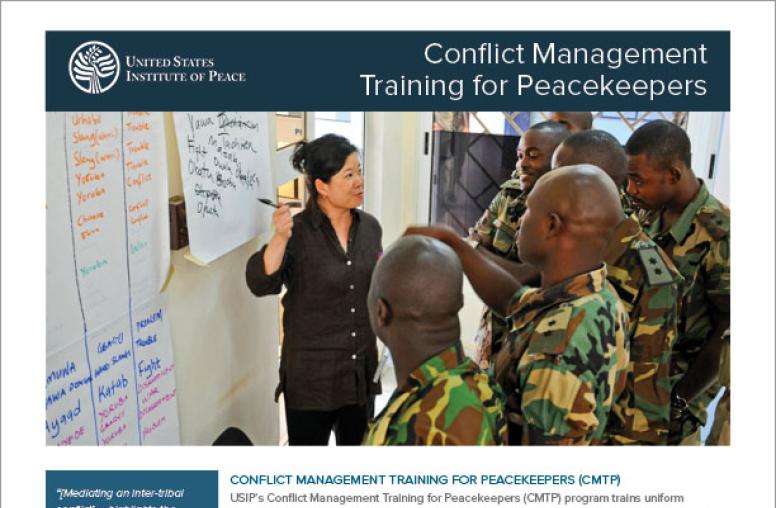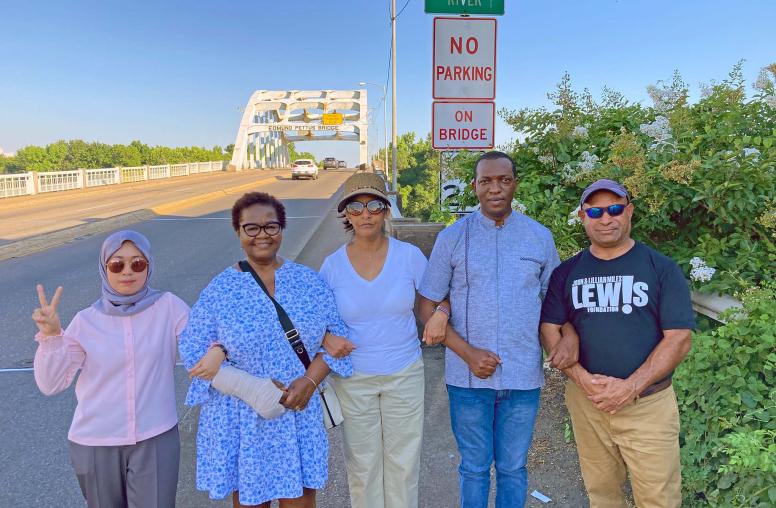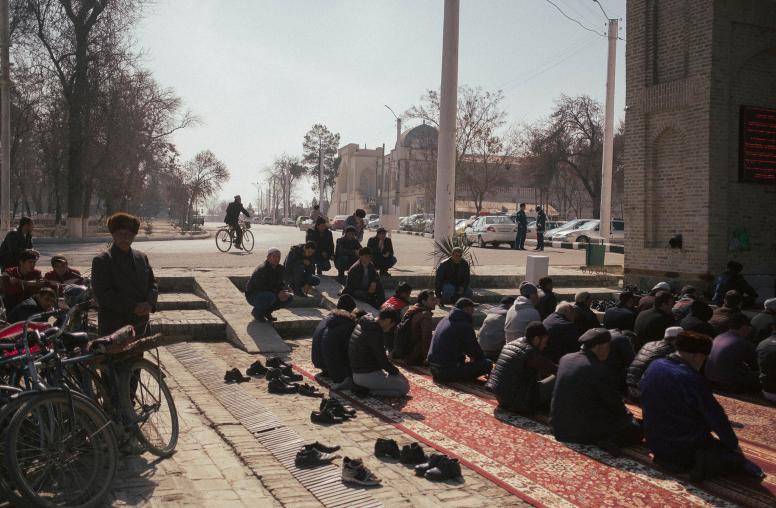USIP, Alliance for Peacebuilding Consider Handling the Complexities of Conflict
The U.S. government has arrived at a “breakthrough moment” in making peacebuilding and stabilization efforts in countries torn by conflict or other crises more effective and coherent, Rick Barton, the assistant secretary of state for conflict and stabilization operations, told a May 11 gathering of specialists at the U.S. Institute of Peace (USIP).

The U.S. government has arrived at a “breakthrough moment” in making peacebuilding and stabilization efforts in countries torn by conflict or other crises more effective and coherent, Rick Barton, the assistant secretary of state for conflict and stabilization operations, told a May 11 gathering of specialists at the U.S. Institute of Peace (USIP).
Addressing a conference held jointly with the Alliance for Peacebuilding, a leading network of peacebuilding organizations and professionals in the United States and across the world, Barton said, “We see the need for some fundamental changes.”
One of those changes is the recent creation of Barton’s own State Department Bureau of Conflict and Stabilization Operations—a move recommended by the Quadrennial Diplomacy and Development Review in late 2010 that aims to strengthen an integrated U.S. response to multifaceted overseas challenges in security, economics, development, democracy-building, health, education and other issues. Barton’s work builds on that of his predecessor, Robert Loftis, who was the acting coordinator for stabilization and reconstruction at the State Department and is currently an interagency professional in residence at USIP.
Barton acknowledged that “cohesion and coherence” within the U.S. government have at times proven inadequate, noting that 62 different U.S. agencies were at work inside of Iraq. He said that a “board of directors” model would be helpful in coordinating efforts to address priority problems, as identified by “fast, rigorous analysis.” The process, he said, requires breaking through traditional institutional barriers and asking “what is most needed” in particular cases.
Barton named three goals for his bureau’s first year: making an impact in two or three places of “real significance to the United States,” which he indicated were Syria, Kenya, northern Central America and Burma; testing new approaches and making a positive difference in an additional eight to ten places; and working in a “more agile, innovative way.” He added, “As we all know, the bureaucracy can move like an elephant….Our goal is to work in a more nimble, speedy fashion.” Barton said he was also concentrating on building a respected team of senior officials and expanding the government’s potential to dispatch staff abroad to address urgent needs on a just-in-time basis.
He also said he recognized that tensions naturally arise between government agencies and nongovernmental organizations when U.S. national interests diverge from the aims of some unofficial humanitarian groups. Barton suggested that such disagreements be honestly acknowledged and that the occasional need to recognize such “distance” does not need to represent “a snub.”
Barton, echoing the comments of USIP President Richard Solomon, suggested that the “next round of conflicts [will] have a very different flavor” from the large-scale commitments made by the United States in Iraq and Afghanistan.
The May 11 conference, “Peacebuilding 2.0: Managing Complexity and Working Across Silos,” focused on the need for peacebuilders of all backgrounds to embrace a systematic, holistic response to conflicts and crises that links peacebuilding programs with efforts in democracy-building, human rights, health, education, development and private-sector initiatives—often called “whole of community” approaches. The peacebuilding community, said Solomon, is “trying to figure out the character of conflict today and how to deal with it,” and a key challenge comes in the “need to break the traditional stovepipes—the isolated activities of the various agencies.”
The need for such rethinking will only grow. Robert Ricigliano, the board chair of the Alliance for Peacebuilding, said, “War now is the norm, and peace is the aberration.” He called 21st century conflicts “qualitatively different. They’re messy.”
USIP has responded to the rising complexity of conflict in a variety of ways, including an Institute-funded “Peacebuilding Mapping Project”—to be released in June—that will provide a picture of the demographics and principles of the peacebuilding field, as well as how it intersects with other fields. The 2.0 conference offered an advance look at the findings.
The conference also featured a set of experts from other fields who provided a briefing on how they manage complexity in their own disciplines. They included Bernard Amadei, founder of Engineers Without Borders; Daniel Chiu, a deputy assistant secretary of defense for strategy; Timothy Ehlinger, an ecologist with the University of Wisconsin-Madison; and Simon Twigger, a genomist and consultant with the Center for Global Health and Peacebuilding.
Sheldon Himelfarb, the director of USIP’s Centers of Innovation on the Media, Conflict and Peacebuilding and on Science, Technology and Peacebuilding, remarked that peacebuilders have not succeeded in communicating the complexities of the field or the importance of working across “silos”—entities in or out of government that are more narrowly focused on specific goals.
“Complexity informs virtually all of the Institute’s work,” says Himelfarb. USIP has addressed the need to manage complexity through its ability to convene a wide range of stakeholders—from government, nongovernmental groups, academe and policy analysis. The Institute, for instance, has organized an ongoing Working Group on Civilian-Military Relations and stewarded special initiatives like the Genocide Prevention Task Force.
The Institute’s Academy for International Conflict Management and Peacebuilding is also involved. “Every Academy course is designed with the complexity of conflicts in mind,” says Pamela Aall, the Academy’s provost. “No single institution can hope to address these complexities. To resolve these conflicts, very diverse institutions must work together. Yet the people in these institutions rarely get to know each other before they are asked to work together in the field, which can have a serious negative impact on their individual efforts. The Academy is a key place where they come together—and where they can receive professional education and training to cope with the real-world environments they will have to operate in.”
Explore Further:
- Peacebuilding Expands Across Disciplines, Study Shows
- Learn more about the "Peacebuilding 2.0: Managing Complexity and Working Across Silos" conference



